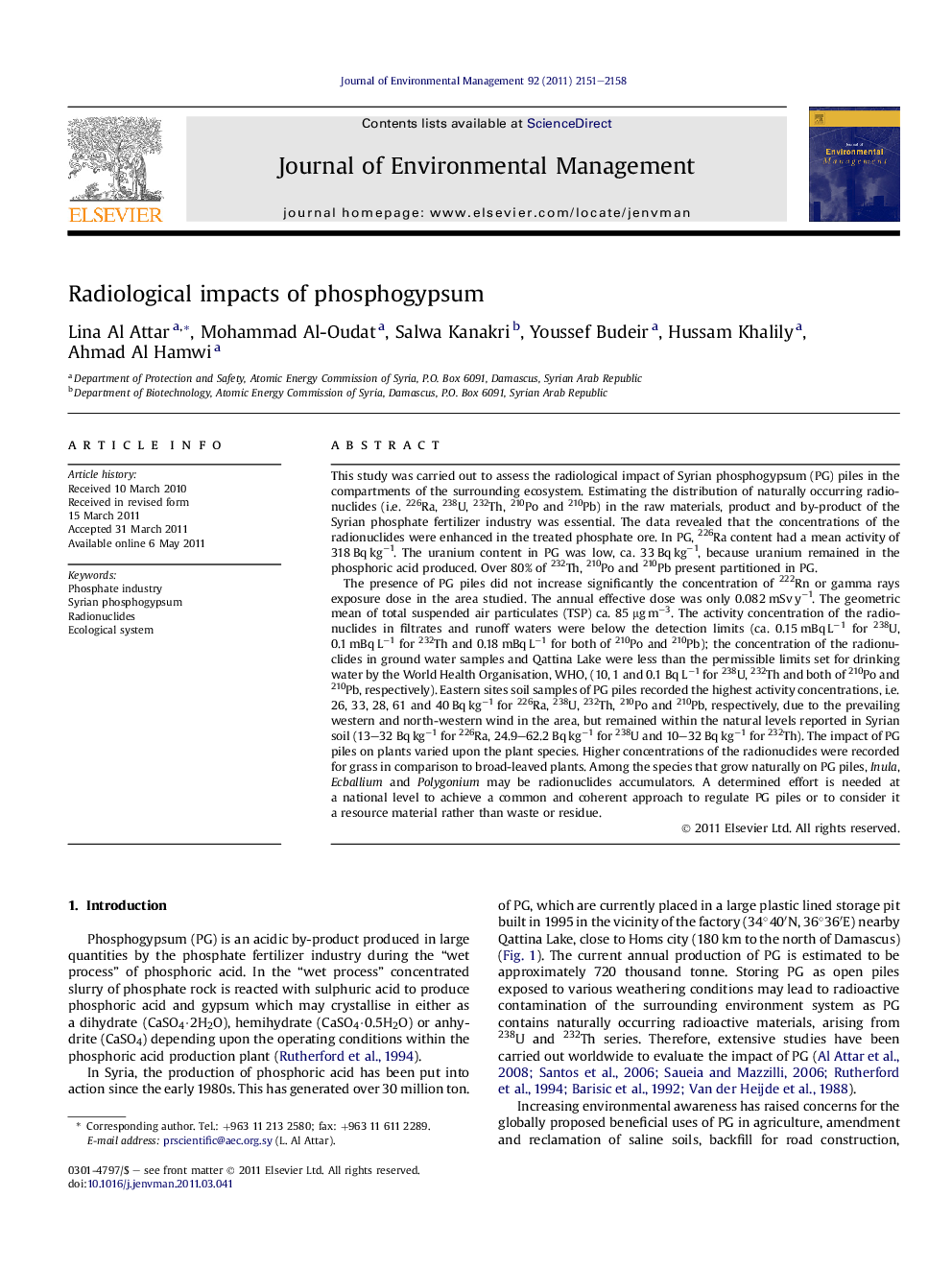| کد مقاله | کد نشریه | سال انتشار | مقاله انگلیسی | نسخه تمام متن |
|---|---|---|---|---|
| 1056999 | 947057 | 2011 | 8 صفحه PDF | دانلود رایگان |

This study was carried out to assess the radiological impact of Syrian phosphogypsum (PG) piles in the compartments of the surrounding ecosystem. Estimating the distribution of naturally occurring radionuclides (i.e. 226Ra, 238U, 232Th, 210Po and 210Pb) in the raw materials, product and by-product of the Syrian phosphate fertilizer industry was essential. The data revealed that the concentrations of the radionuclides were enhanced in the treated phosphate ore. In PG, 226Ra content had a mean activity of 318 Bq kg−1. The uranium content in PG was low, ca. 33 Bq kg−1, because uranium remained in the phosphoric acid produced. Over 80% of 232Th, 210Po and 210Pb present partitioned in PG.The presence of PG piles did not increase significantly the concentration of 222Rn or gamma rays exposure dose in the area studied. The annual effective dose was only 0.082 mSv y−1. The geometric mean of total suspended air particulates (TSP) ca. 85 μg m−3. The activity concentration of the radionuclides in filtrates and runoff waters were below the detection limits (ca. 0.15 mBq L−1 for 238U, 0.1 mBq L−1 for 232Th and 0.18 mBq L−1 for both of 210Po and 210Pb); the concentration of the radionuclides in ground water samples and Qattina Lake were less than the permissible limits set for drinking water by the World Health Organisation, WHO, (10, 1 and 0.1 Bq L−1 for 238U, 232Th and both of 210Po and 210Pb, respectively). Eastern sites soil samples of PG piles recorded the highest activity concentrations, i.e. 26, 33, 28, 61 and 40 Bq kg−1 for 226Ra, 238U, 232Th, 210Po and 210Pb, respectively, due to the prevailing western and north-western wind in the area, but remained within the natural levels reported in Syrian soil (13–32 Bq kg−1 for 226Ra, 24.9–62.2 Bq kg−1 for 238U and 10–32 Bq kg−1 for 232Th). The impact of PG piles on plants varied upon the plant species. Higher concentrations of the radionuclides were recorded for grass in comparison to broad-leaved plants. Among the species that grow naturally on PG piles, Inula, Ecballium and Polygonium may be radionuclides accumulators. A determined effort is needed at a national level to achieve a common and coherent approach to regulate PG piles or to consider it a resource material rather than waste or residue.
Journal: Journal of Environmental Management - Volume 92, Issue 9, September 2011, Pages 2151–2158